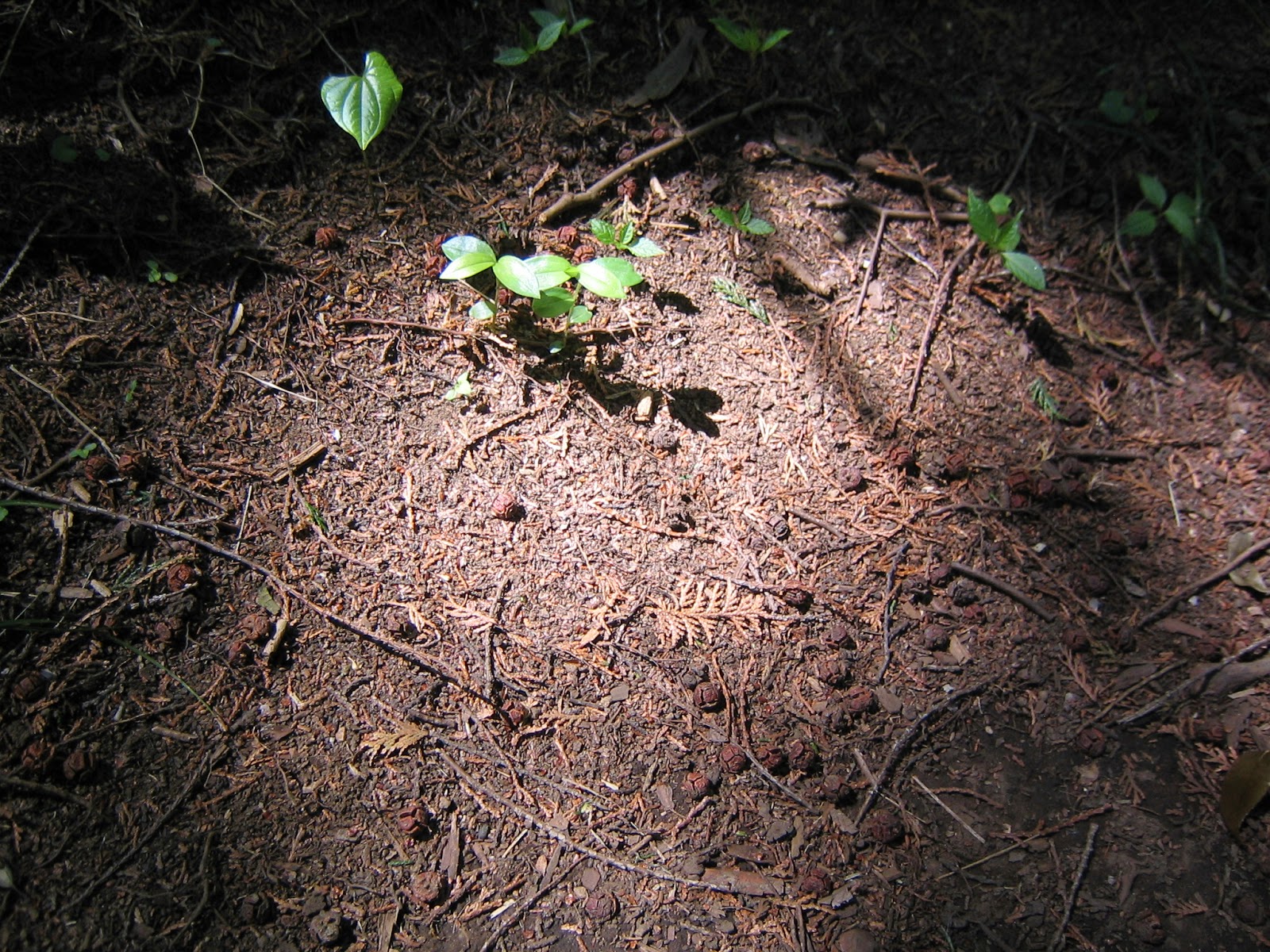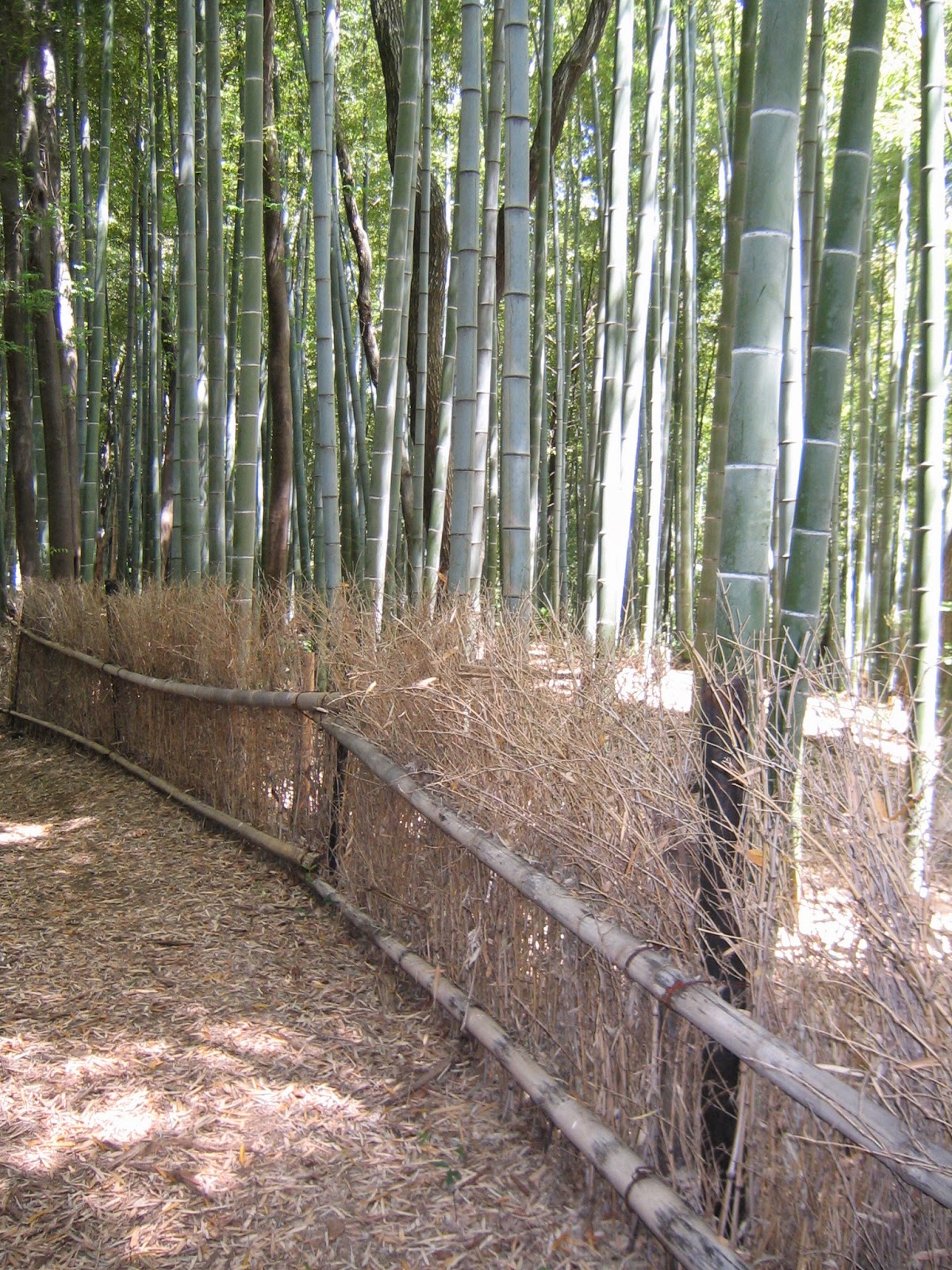 |
| Niiharu Citizen Forest viewed from Miho Nenjuzaka Park 三保念珠坂公園 |
 |
| oh, yes. |
 |
| Some routes are closed due to maintenance. Beyond is an afforestation site by volunteers and kids from local elementary schools. |
i.e., Basically Mukaiyama is a cultivated forest for generations. Coniferous forest is for traditional construction materials in Japan, and bamboos are for tools of daily activities, such as baskets and utensils. And hence, Satoyama Center has a regular bamboo basket weaving class. Especially in spring, bamboos provide seasonal delicacy of bamboo shoots, takenoko たけのこ.
 |
| If you find bamboo shoots this large, it is too hard to eat already. Let it shoot into the sky. |
there is a warning sign saying “This land is a private property. Digging out bamboo shoots without permission is a crime.”
Aside from culinary and artisanal usage, bamboos were used for flooring at least in Kanagawa Prefecture until the middle of the 19th century. Before Meiji restoration, Niiharu area was a part of land directly controlled by Tokugawa Shogunate in Tokyo. The regulation over the way of living for ordinary people was harsh and strict as Sagami-no-kuni 相模国 (the ancient name for the major part of Kanagawa Prefecture) and Musashi-no-kuni 武蔵国 (the past name of now Tokyo, Kawasaki, and a part of Yokohama) were so near to the castle of Shogun (which is now the Imperial Palace).Ordinary people who lived in the current northern part of Yokohama had to ask special permission from Shogun to construct a house with wooden or tatami-mat floor, as they were more expensive than fast-growing bamboos. Bamboos are easy to be bristled so that it requires frequent changes of floors, i.e. a greater demand for bamboos if they are for floors. The local seniors of Niiharu say in a-matter-of-fact way that any farmers with land (i.e., the ancestors of current landlords of Niiharu) had to have a well-cared bamboo forest. The large bamboo forest in Mukaiyama is the remnant from the time of Shogun. Mukaiyama also maintains the bushes of Sasa veitchii which was once ubiquitous in Yokohama, but now in near extinction.
 |
| Sasa veitchii is thriving beneath the canopy. |
 |
| D-1 entrance |
 |
| I think they are plums. |
 |
| Mukebara |
It is Mukebara 向ヶ原, aka “Niiharu Megumi-no-Sato (Niiharu with blessings) 新治恵みの里,” that is used for educational farming activities operated by local landlords. The harvest from here appears in Farmers’ Market every Saturday.
Between Ikebuchi Hiroba 池ぶち広場 and Miharashi Hiroba みはらし広場, the route is wide enough for a small truck to carry necessary supplies for the maintenance of the Forest. If you are with babies in buggies, you can take the Ikebuchi Route (from A-1 to A-8) for picnic. Ikebuchi Hiroba has faucets for potable water and several picnic benches some of which is under a magnificent canopy of wisteria in full-bloom early May.
 |
| Ikebuchi Hiroba also has toilets, with paper, but no soap. |
 |
| Local mums bring their kids by bikes to Ikebuchi Hiroba for picnic. |
 |
| It’s not artificial spot light. I just took a photo of the ground near E-5, one fine day. |
 |
| Around D-10. The route is really well-kept. |
 |
| A scenery near D-8. Can you figure out a parking for Yokohama Zoorasia in the middle? |
 |
| And suddenly we find logs for Shiitake Mushrooms in the Forest! |
The eastern
area between Route E and Route D is called Yaman’me Yama やまんめ山. Before,
this was the point where people could find many wild silk warm cocoons.
(“Yaman’me” means “cocoons of wild silk worm.”) Wild silk cocoons produce the
best quality silk so that this hill was really a wealth factory. Now it is the
area for regular summer news for wasp and mamushi attacks.
 |
| A warning for wasp attack! |
The
entire experience in the southern part of Niiharu Forest is meditative and
really refreshing. Let’s just be modest, as we humans are intruders of family
life for wasps and snakes. Don’t be greedy for silks …
If you find a
problem in the Park, please make a contact with
Office for the Park Greeneries in the
North北部公園緑地事務所
Yokohama Municipal Government
Creative Environment Policy Bureau横浜市環境創造局
Phone: 045-311-2016 (I guess in
Japanese only)
FAX: 045-316-8420 (I hope there is
somebody who can read English …)
Niiharu Administrative Office /
Satoyama Exchange Center新治管理事務所・里山交流センター
Phone: 045-931-4947
Fax: 045-937-0898
http://www.niiharu.jp/ 





No comments:
Post a Comment